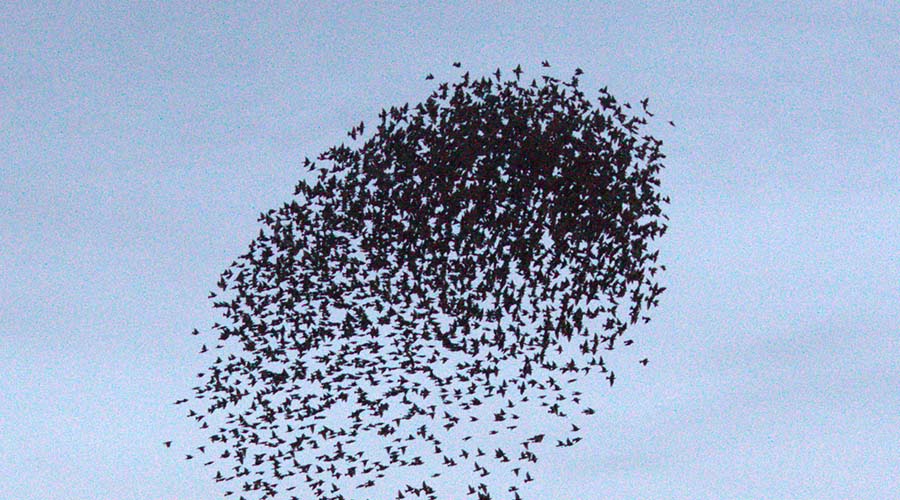 The natural show represented by the hypnotic and changing figures drawn in the sky by the coordinated and synchronised movements of starlings is the result of a collective behaviour that many bird species can adopt to promptly respond to attacks from their predators. In a similar context, the study of the properties of individual birds’ motion is indispensable for trying to understand the evolution of the dynamics of flight of one starling, which constitutes, in the light of the changeability that distinguishes its components, one of the most exemplary cases of a complex system. To provide an answer to how birds regulate their speed within a group of their own, INFN and Sapienza University of Rome researchers belonging to the ‘Cobbs’ (Collective behaviour in biological systems) group of the CNR Institute of Complex Systems (CNR-ISC) propose a new mathematical model. This model focuses on describing a particular species that is very widespread in our country and in the scientific literature, the starling (Sturnus vulgaris). The result, published on May 10 in Nature Communications, opens new roads for understanding biological systems in the field dedicated to developments in robotics and engineering.
The natural show represented by the hypnotic and changing figures drawn in the sky by the coordinated and synchronised movements of starlings is the result of a collective behaviour that many bird species can adopt to promptly respond to attacks from their predators. In a similar context, the study of the properties of individual birds’ motion is indispensable for trying to understand the evolution of the dynamics of flight of one starling, which constitutes, in the light of the changeability that distinguishes its components, one of the most exemplary cases of a complex system. To provide an answer to how birds regulate their speed within a group of their own, INFN and Sapienza University of Rome researchers belonging to the ‘Cobbs’ (Collective behaviour in biological systems) group of the CNR Institute of Complex Systems (CNR-ISC) propose a new mathematical model. This model focuses on describing a particular species that is very widespread in our country and in the scientific literature, the starling (Sturnus vulgaris). The result, published on May 10 in Nature Communications, opens new roads for understanding biological systems in the field dedicated to developments in robotics and engineering.
- NEWS INFN






